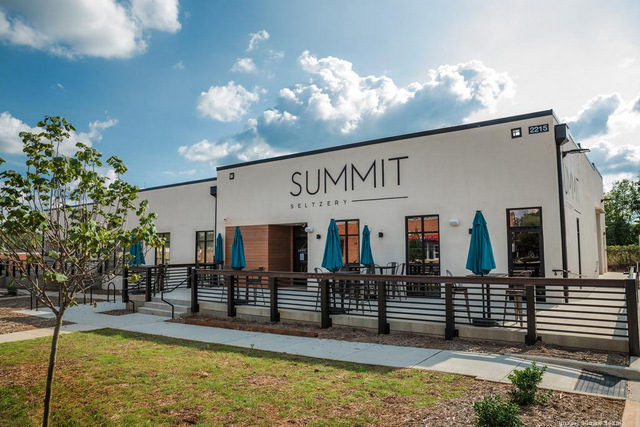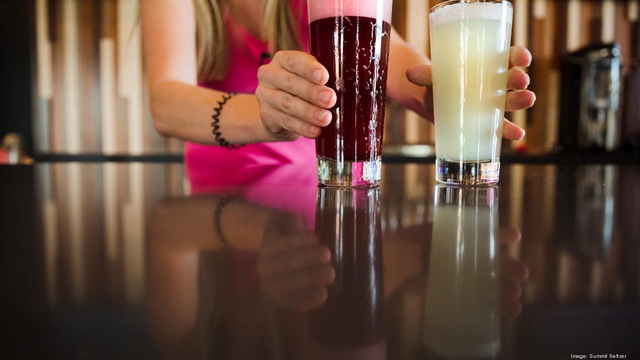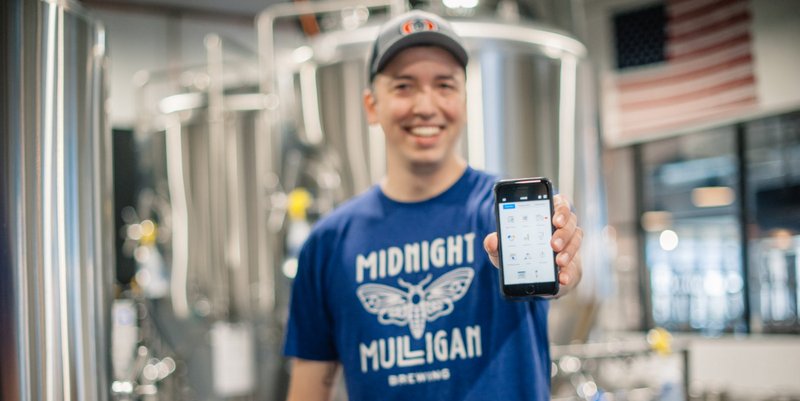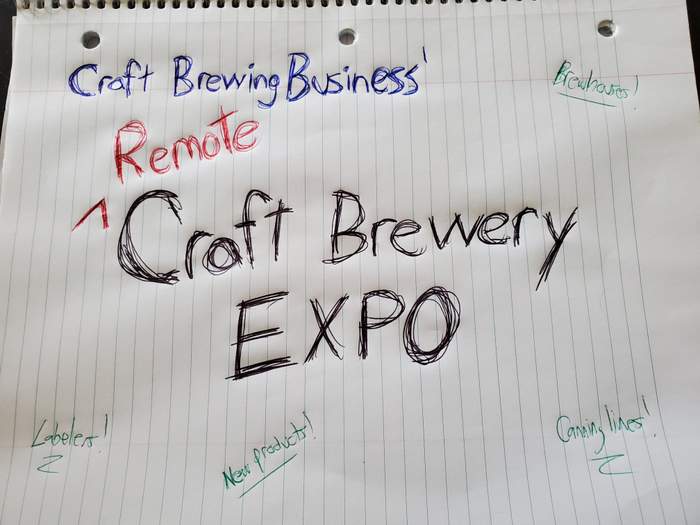
A few years ago, there was a lot of talk about hard seltzer as a “fad.” But the industry, which has increasingly distinguished itself from beer, has only continued to grow. The global hard seltzer market is already worth 4.5 billion dollars in 2020, and its predicted to be worth 14.5 billion dollars by 2027. For craft beer brands trying to diversify their audiences and stay competitive, seltzer is a safe bet for the foreseeable future.
That future wasn’t always so clear, though — Summit Seltzer founder Kristin Cagney knows this firsthand. “Investors were interested” when they began pitching their business, she said. “But banks said, ‘This [type of business] doesn’t exist.’” As any business owner knows, banks don’t like to take risks.
Luckily, Cagney had done her research, and she was confident in her plan. While completing an MBA in marketing at the University of North Carolina at Charlotte, she took a deep dive into market research on beer and found that consumers were itching for a new kind of craft product.
Recognizing market trends
In the final stretch of earning her MBA, Cagney convinced the director of her program to dedicate a market research and analytics class to consumer sentiments about breweries. Through that research, Cagney discovered that the real draw of breweries for many people was the experience, not necessarily the beer. And with many consumers looking for gluten-free, low-carb alternatives to craft beer, craft seltzer seemed like the perfect fit.
These findings gelled with Cagney’s experience working in breweries herself. “It was astounding how many people came in really excited to be at the brewery but then didn’t want beer,” she said. “People want the laidback vibes of a brewery, but beer isn’t for everybody. Seltzer is almost dangerously drinkable.”
In a league of its own
While many industry researchers used to lump seltzer in with the broader “flavored malt beverage” or beer categories, it’s become increasingly clear that consumers don’t think of it that way. 60 percent of U.S. buyers of hard seltzer consider it as its own category. So, it makes sense that nearly half of the growth of the seltzer category has come from buyers switching from another product in the beer, wine, and spirits market.
And while it’s tempting to think hard seltzer only appeals to a certain type of consumer, Cagney said that’s not what she’s seen in her taproom since Summit opened in September. “It’s awesome to see how universal it is,” she said.
That far-reaching appeal has meant fast and constant growth in the seltzer market overall. The number of hard seltzer brands has increased from just 10 in early 2018 to more than 65 in late 2020. According to recent research from Nielsen, hard seltzer is the most resilient alcohol segment in the U.S., with the most sustainable growth trajectory and no signs of slowing down.
A day in the life of a seltzery owner

Like any small business owner, Cagney’s days are hectic and varied. When we talked to her, she was out running errands with a shopping list that included everything from computer paper and printer ink to toilet paper.
Recently, her team bought a new 20 bbl fermenter and realized they didn’t have what they needed to lift it into place. So, she spent the afternoon introducing herself to neighboring businesses with the line, “Hey, I know this is a stupid question but … you got a forklift?”
On a more “typical” day, Summit’s Head Brewer Ben Quinones carefully records production activities in Ekos. Cagney says this helps her keep track of important business metrics like cost of goods sold (COGS), which will help her make smart business decisions as Summit scales. Always short on time, Cagney hopes documenting this data as they go will make her life easier when filing taxes later. “All of those forms are just a nightmare,” she said. (Can we get an “amen”?)
On top of everything else, Cagney has also been bartending and managing Summit’s Charlotte taproom two nights a week. She knows she can’t manage 16-hour workdays forever, but she thinks it’s valuable to walk in her team’s shoes. “It’s really important for me to be in the role of every single one of my employees before I can be a proper owner and tell them how to do things,” Cagney said.
Regardless of how chaotic things get, she’s thankful this is her day-to-day. There’s no consistency to her schedule, but that’s her favorite part. With a past life in corporate finance, Cagney certainly knows what it’s like to sit in an office cubicle all day — and she’s glad to have left that life behind.
Visions of a sparkling future
Summit has only been open for a couple of months, so Cagney is focused on building a solid foundation before setting her sights on bigger goals. Right now, her focus is on the seltzer itself — they have a market research group come in every day to provide feedback on their flavors. “The taproom is like our lab,” she said. Once they know which flavors are strongest, they’ll make a plan for canning and distribution.
Along with distribution, Cagney sees additional taprooms in Summit’s future — maybe in Denver, where she lived for years before coming to Charlotte, or her hometown of Chicago. “We really want to blow the brand up and be the craft seltzer for everyone,” Cagney said. Although she’s quick to mention they have no plans of becoming a corporate conglomerate. “We’re 100% family-owned,” she said.
Her MBA program showed Cagney “in an almost terrifying way” the power of marketing and branding, so she’s determined to establish Summit’s reputation as a company with great products and experiences before expanding. “If we want to grow successfully, we need to build a strong brand in the beginning,” she said.
If the first few months are any indication, they’re off to a spirited start.
Christina Kyriazi is the vice president of marketing at Ekos.





Leave a Reply
You must be logged in to post a comment.